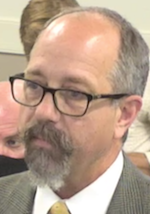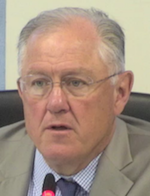Austin transit authority says the 197 zero-emissions electric buses will reduce pollution, noise, and fuel costs
The board of Capital Metro (CapMetro) has approved the purchase of up to 197 new electric buses in the next five years at an average cost of $960,000. With charging equipment and warranties, the price per bus tops $1 million.
At a board meeting Monday, CapMetro directors voted unanimously to authorize the execution of contracts with two U.S. manufacturers: New Flyer of America Inc. and Proterra Operating Company, which have plants in Alabama and South Carolina, respectively. The two firms won a bid issued April 15, 2021, which attracted only four proposals.
The deal with the two firms consists of a base award of 56 buses for $53 million, with options for the purchase of up to 141 more for $136 million, according to award details included in the agenda backup for the board meeting. That averages to $960,000 per bus, not counting necessary add-ons such as warranties and a charger.
CapMetro plans to use the buses to replace 124 diesel buses in its existing local fleet, add eight buses to local routes, and expand its MetroRapid commuter fleet by 65. Nineteen of the contracted vehicles are 60-foot articulated buses, also called “bendy buses,” which cost $1,366,500 each. However, the majority of the order consists of standard 40-foot buses costing about $915,000 each.

Optional items in the contract include $30,000 each for 197 plug-in chargers and $114,000 each for 197 overhead chargers, which CapMetro’s Chief Operating Officer Dottie Watkins indicated to the board would be the agency’s preferred method of charging. “As we grow the fleet, we want to transition to overhead charging so that you can park under it and it charges the bus as opposed to having to plug in and unplug every single bus,” she said.
Warranties for the batteries would add $59,000 to the cost of each bus. Warranties for the overhead chargers would cost $36,000 each, and warranties for the plug-in chargers would cost $11,000 each.
Altogether that comes to about $1.17 million per bus if CapMetro opts for all overhead chargers, or about $1.06 million if it opts for all plug-in chargers.
Additionally, CapMetro plans to install a third type of charger, on-route overhead chargers, on as many as 33 MetroRapid buses. Those would add $13.5 million to the total contract cost. Watkins told the board, “One of the biggest limitations currently with battery electric buses is that they won’t run for 14 hours on a single charge like a diesel bus might. So we’re looking to install chargers at the ends of the line so that we can refresh the batteries as we go throughout the day.”

CapMetro is still studying what mix of chargers it wants to purchase, which is why multiple options are included in the contract, according to Andrew Murphy, director of vehicle maintenance. “We won’t obviously be buying everything that’s in the contract as optional items, but it does allow us to grow in the direction we need to grow based on what our consultants tell us,” he said.
If CapMetro exercises all its options under the award, including custom lighting, all varieties of charger, all warranties, and staff training, then the per-unit contract cost would come to $1.29 million. However, as Murphy noted, the agency doesn’t plan to exercise all of the charger options, which suggests the actual cost per bus will come in closer to $1.1 million to $1.2 million.
For comparison, diesel-powered counterparts to the 40-foot buses cost $536,000 in 2017, and the 60-foot articulated buses cost $760,000, according to a report published in the Austin American-Statesman August 28, 2020.
‘Zero-emissions features’
Despite the hefty price tag, CapMetro is celebrating the procurement as a major milestone toward a “cleaner future.” In a news release, the agency touted the deal as “the nation’s largest electric vehicle procurement to date.”
“The community will benefit from the zero-emissions features of the buses, with annual savings of approximately 230,000 pounds of greenhouse gases when compared with diesel. Additional benefits include reduced air pollution, noise level, and heat and fuel costs, all powered by clean electric energy.”
District 3 Council Member Sabino “Pio” Renteria, who serves on the CapMetro board, said at the board meeting, “This is a game changer for Austin and the environment. With the climate changing as it is we really need to accelerate this type of purchase and investment.”
Proterra, which has previously supplied CapMetro with six electric buses, likewise celebrated the contract in its own news release. “Proterra is incredibly proud to build on our strong partnership with CapMetro and deliver our newest, fifth-generation electric bus technology to help Austin realize its important goal of 100 percent zero-emission transportation,” said Josh Ensign, Proterra president.
Cost savings?
A price tag topping $1 million might seem a lot for a bus, but CapMetro executives say that the up-front investment will be offset by long-term cost savings on fuel and maintenance. “We think we got a good price,” Murphy said in reply to a question from Board Member Leslie Pool about whether CapMetro had received any kind of volume discount from the manufacturers.
Although there was no such discount, the contract was awarded based on “best value” out of four bidders, he said. Pool questioned whether there were any negotiations with the manufacturers over price after the RFP (Request for Proposals). There were not, he said.

Murphy was also asked by Board Chair Wade Cooper whether the agency had done any analysis on how total cost of ownership for an electric bus compares with a diesel bus. He replied, “In the end the electric buses will end up costing less than the diesel buses even with the premium—the extra $400,00 to $500,000 per bus—especially with the energy efficiency. We expect to see a reduction in maintenance cost as well.”
A more specific cost analysis was not made available to the board before the vote.
However, CEO Randy Clarke said that the agency is learning from its existing fleet of 12 electric buses and will draw further lessons from the first batch of 56 buses that it purchases under this agreement before exercising options for more. “We’re not committed to those next orders. We’re committed to performance,” he said. “This next fleet will allow us, a couple years from now, to really understand those dynamics a lot more.”

The board chair voiced support for the new procurement but sounded non-committal about abandoning diesel buses altogether without further cost studies. “As we ramp up our reliance on electric we’ll look forward to more information in terms of how we’re doing on sort of a total cost of ownership,” Cooper said.
“Hopefully it works out great but we need to stay focused on how we’re doing (in terms of cost).” Cooper is the managing partner of law firm Jackson Walker LLP, and an appointee of the Capital Area Metropolitan Planning Organization, a regional transit board with authority to appoint three of seven members of the CapMetro board.
The first shipment of new electric vehicles is scheduled to arrive by the end of 2022. The diesel buses won’t all be retired at once. In fact, because they were purchased in part with federal funds, they must be kept in service for at least 12 years, requiring a phased approach. Cooper also mentioned the power outage during the winter storm this year, suggesting it was a good thing that some of the diesel buses would remain in service for now.
The new buses will be equipped with security cameras, front and rear door buttons that allow passengers to get on or off when the bus is stopped, semi-automatic wheelchair securement systems, blind-spot mirrors, vinyl seats, USB charger ports, and LED screens to display route information.
Ridership
CapMetro’s new investment in buses comes at a time when ridership is still just a fraction of the pre-pandemic level. Monthly ridership on the CapMetro system was 1.5 million in July (the latest month for which data is available), compared to 2.6 million in February 2020, the last full month before the pandemic, according to a CapMetro data dashboard.
But CapMetro planners are focused on a longer time horizon. They believe that by expanding the reach and frequency of bus routes they can eventually get more Austinites out of their cars and onto public transit. In addition to electrification of the bus fleet, CapMetro is working to implement the light rail plan known as Project Connect, which voters agreed to fund last November through a dedicated transit tax.

CEO Clarke has pointed to that tax, the possibility of federal matching funds, and perceived political support from pro-transit leaders in the federal government, such as Transportation Secretary Pete Buttigieg, as reasons to be bullish on transit and to make aggressive investments. “Public transportation has a bright future in Central Texas,” he said in the news release.
However, in the near term CapMetro’s more pressing need isn’t for more buses but for bus drivers. The agency hasn’t been able to find enough staff to maintain its routes. Starting September 19th, CapMetro suspended three late-night routes and doubled wait times on ten high-frequency routes. Explaining the move on its website, it cited “a persistent staffing shortage that prevents us from fulfilling our promised service levels.” It blamed high housing costs in Austin, early retirements, and illnesses in its workforce.
Chief Operating Officer Watkins told the board August 30 that the agency was short 100 drivers and 10 mechanics. It is offering a signing bonus of $3,500 for candidates with a commercial driver’s license and $1,500 to other new employees.
In the wake of the service cuts, CapMetro announced free fares on its entire network throughout October as a means of building goodwill among customers. It stated in the announcement, “Capital Metro recognizes the challenges the agency’s current level of service has brought to the community, and implementing free fares for a period of time is a small way to ease those challenges.”
 Trust indicators: Bulldog reporter Daniel Van Oudenaren is a journalist with 12 years experience in local, state, and international reporting.
Trust indicators: Bulldog reporter Daniel Van Oudenaren is a journalist with 12 years experience in local, state, and international reporting.
Related Bulldog coverage:
Austin Transit Partnership approves $312.8 million budget, September 17, 2021








I was wondering if any of the busses will be equipped with recharging solar panels.
I thought I read the article looking for who is going to pay for this and where the money is coming from, and for how long? Is it just an add on to Project Connect and hopefully money from the Federal Government or is there also going to be a bond? One other question, does CapMetro make a profit each year that could go to buying buses?
Take aways:
Less efficient than diesel, can;t complete the same duty cycle as a diesel bus without pausing to recharge.
More costly than diesel.
But somehow it’s green, and green is the color of money spent and contris routed to various enablers.
Awesome, and the tax serfs pay whether or not they ride.
What is CapMetro’s farebox return ratio these days?